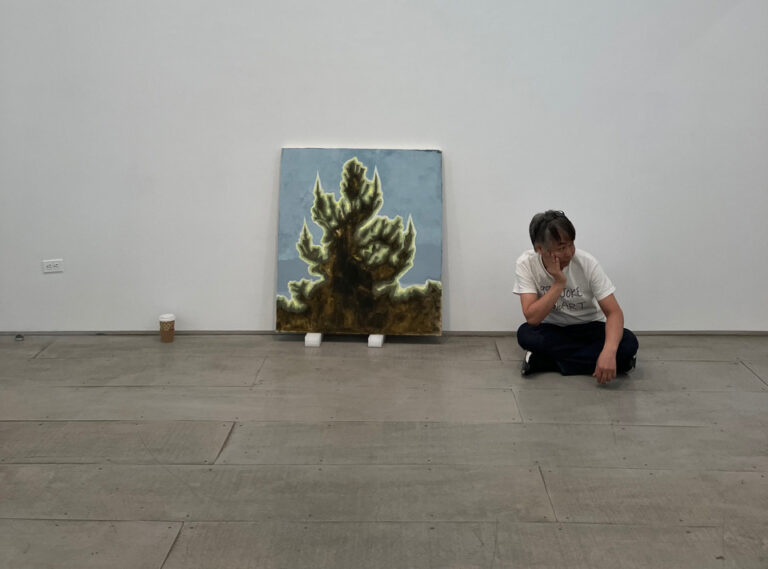Painter Kazuyuki Takezaki, whose blurry, washed-out landscapes made him a much-discussed artist in the Japanese art world, has died of a heart attack at the age of 48. Jeffrey Rosen, co-founder of Misako & Rosen, Takesaki’s representative in Tokyo, confirmed the artist’s death and said his gallery was working to build Takesaki’s legacy.
Takesaki died just weeks after his first major solo exhibition in New York at 47 Canal Gallery. That exhibition featured paintings of trees, mountains, greenery and more that he had recently discovered in the Japanese coastal city of Marugame.
The forms of these paintings incorporate abstraction, testifying to the disappearance of the natural world as man-made industrial intervention now poses a significant threat to the area surrounding Marugame. “Takezaki’s work conveys a profound and fleeting sense of place, and his window onto this ever-changing environment is also a reflection on time, memory, and the porous overlap between subject and object,” Andrew Melkel writes in 47 writes an accompanying article to the Canal exhibition.
The 47th Canal Exhibition is one of Takesaki’s few exhibitions in the United States. In Japan, he has an important resume, having held solo exhibitions at the Kochi Museum of Art and Misako & Rosen.
He was born in Kochi, Japan, in 1976, and his birthplace would continue to figure prominently in his practice. He wrote in the exhibition text for the 2008 Misako & Rosen exhibition: “The combination of nature and artificiality in this town is so full of possibility that it sparked my imagination.”
Takezaki went on to attend Kochi University. After graduating in 1999, he moved to Tokyo to focus on developing his artistic practice.
Early on, Takezaki’s art appeared in group shows at blue-chip galleries such as Yvonne Lambert in New York and Ota Gallery in Tokyo. But Takezaki made a gallery that helped him earn a place on the Japanese scene: Takefloor, which he started in his small Tokyo apartment.

Kazuki Takezaki, board/table2023.
Courtesy of Misako & Rosen, Tokyo and 47 Canal, New York
Takezaki’s agent Jeffrey Rosen believes that Takefloor is a catalyst for experimental art in the Japanese art world. Rosen credits Takefloor with inspiring him to open Misako & Rosen, saying Art room In 2015, Takezaki Gallery “gave our generation the courage to start carving out our own space.”
After working in Tokyo for a while, Takezaki returned to Kochi and then moved to Marugame. In the latter city he began working on his “board/table” paintings, for which he attached a canvas to a board and drove out of the city with it. Facing mountains and trees, he would sketch what he saw with an oil stick, working quickly, trying to perpetuate all of these changing natural phenomena over the course of several days. Some of the works were shown at 47 Canal this year and at Green Art Gallery in Milwaukee in 2023, his first solo exhibition in the United States.
Although they begin as human figures, the fragments quickly dissolve into blobs of pastel color. “At dusk,” Takezaki once said, “I often see the town divided horizontally into upper and lower halves by transparent and opaque colors.”


